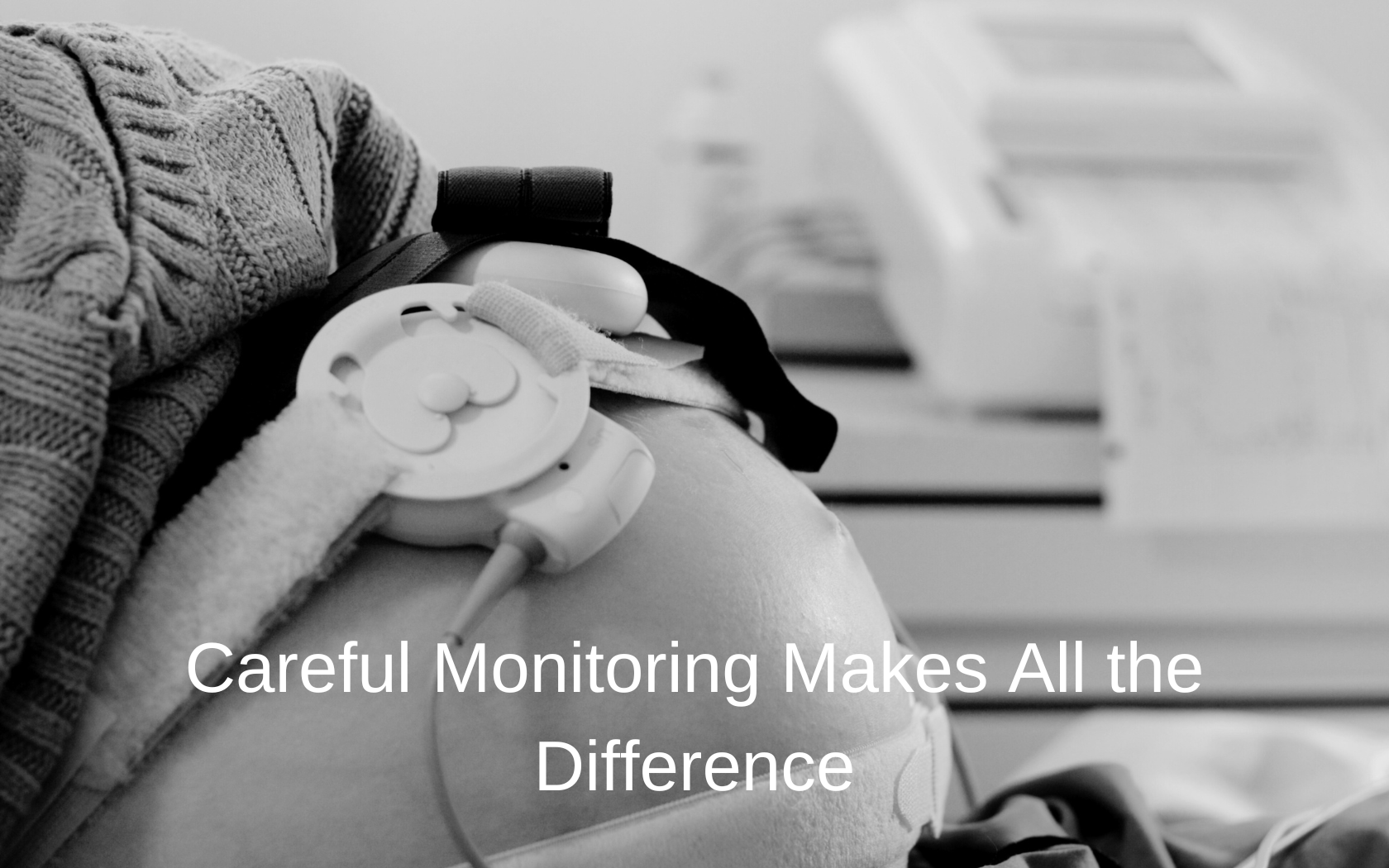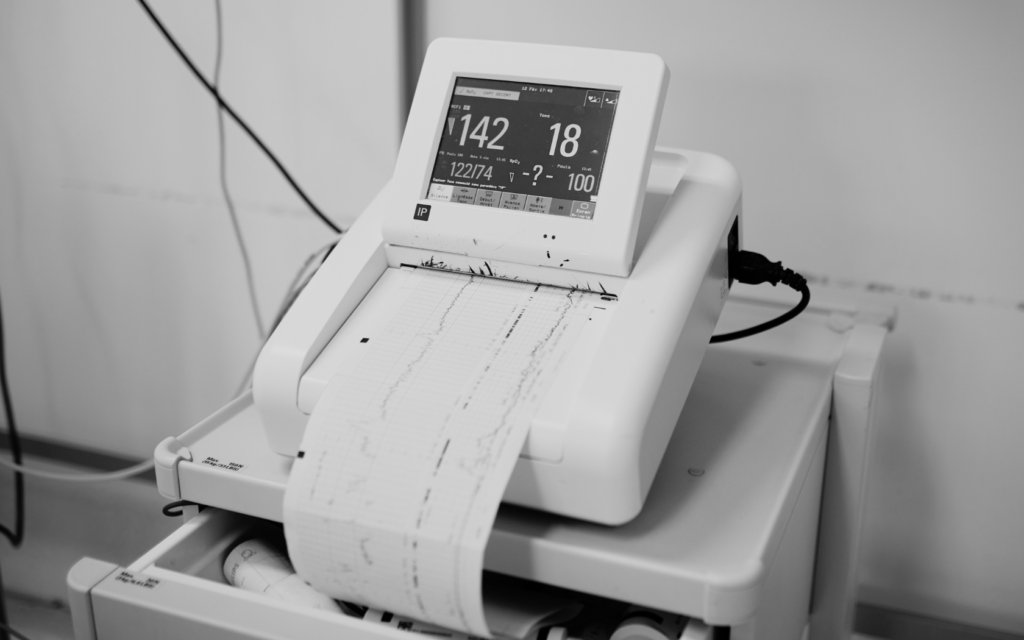Fetal monitoring strips might look like a child’s jagged scribbles. But they hold much more meaning—and are often the key to preventing birth injuries.
In this article, we’ll explain why fetal heart rate monitoring is essential for a baby’s well-being during birth, and what fetal distress on a monitor looks like.

Fetal Heart Monitoring Helps Prevent Injuries
The main way for doctors to check a baby’s health status is through monitoring their heartbeat. Obviously, it’s impossible for a doctor to place a stethoscope on a baby’s chest and listen to their heart if they’re still in the womb.
But there are other techniques they can use, including:
- Doppler ultrasound: A device placed on the mother’s abdomen emits and receives sound waves to detect the fetal heart rate.
- Electronic Fetal Monitoring (EFM): Doctors strap a device around the mother’s abdomen so they can detect and record fetal heart rate. It can show how the fetus is responding to contractions during labor. The information is displayed graphically on a strip of paper or electronically on a monitor.
- Internal monitoring: Doctors insert electrodes into the fetus’s scalp. This is called a fetal scalp electrode. Or, they may put a sensor into the amniotic space beside the fetus (intrauterine pressure catheter). This method can be more accurate, but there’s a higher risk of infection and injury.
The first time a baby’s heart is monitored is during prenatal appointments. The heart rate and rhythm provides important information about the baby’s health and development.
During labor and delivery, fetal heart monitoring is often continuous. It’s used to assess the baby’s response to the stress of contractions and to detect signs of fetal distress. It gives doctors the information they need to make decisions during labor, such as when to change birthing positions, or when to order an emergency C-section.
What are Fetal Monitoring Strips?
Fetal monitoring strips are paper printouts or electronic displays that record the fetal heart rate (FHR) and uterine contractions over time. They are used with both EFM and internal monitoring.
During labor, these strips provide a visual picture of how a baby is coping. They can show signs of fetal distress, such as abnormal heart rate patterns or inadequate oxygen supply. Abnormal heart rate patterns can indicate potential complications, so it’s very important that nurses and doctors pay attention to the strips.

Fetal Distress and Non-Reassuring Heart Tracings
Fetal distress on a monitor shows up as what doctors call a “non-reassuring” pattern. Non-reassuring indications include the following:
- Bradycardia: The heart rate is lower than 110. This could indicate decreased oxygen supply to the fetus. Note that the definition of a “healthy fetal heart rate” can vary a bit depending on the fetus’s gestational age.
- Tachycardia: The fetal heart rate rises above 160. This could suggest fetal distress or maternal fever.
- Variable decelerations: Abrupt decreases in the fetal heart rate. Their cause can be umbilical cord compression or other factors that decrease oxygen flow to the fetus.
- Late decelerations: These are gradual decreases in the fetal heart rate that occur after the peak of a uterine contraction. They usually mean the fetus isn’t getting enough oxygen.
- Prolonged decelerations: These are sustained decreases in the fetal heart rate lasting longer than expected.
- No variability: Variability refers to fluctuations in the fetal heart rate, which are considered normal. But reduced variability may indicate fetal hypoxia or central nervous system depression.
In summary, fetal monitoring strips should show variability, which looks like fluctuations in a jagged line on the monitor. That means the baby has a healthy heart and circulation, and is tolerating labor well.
But if the heart rate doesn’t have the expected fluctuations, or flattens out, there’s probably an issue. It’s up to doctors to identify what the issue is right away. Otherwise, babies can end up with serious injuries, such as brain damage from oxygen deprivation.

Ignoring Fetal Distress on Monitor: Negligence or Not?
There have been cases where nurses or doctors see anomalies plain and clear on fetal monitoring strips, yet fail to diagnose fetal distress. Or perhaps they haven’t been trained properly to interpret fetal monitoring strips. Or maybe they can interpret them, but don’t pass this information on to the doctor on call.
Failing to see or respond to fetal distress on the monitor can have devastating results. A baby can be born with lifelong disabilities that could have been prevented. When that’s the case, the baby’s family may have cause to sue for damages.
Our birth injury lawyers possess the expertise needed to navigate complicated fetal heart monitoring cases. We hold a proven track record of success, including cases of negligent fetal heart monitoring. Contact us to see how our experience could help you gain maximum compensation.




